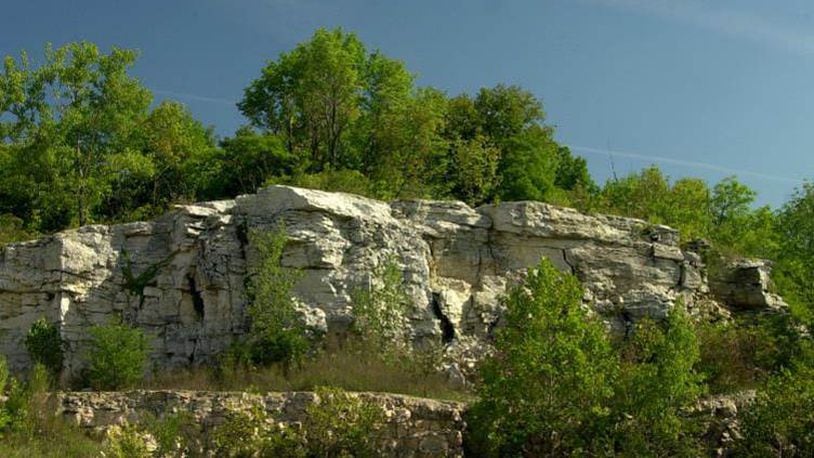>> Things to love about Dayton
>> PHOTOS: Cool Dayton geology
August Foerste
A born and raised Daytonian, Foerste had a passion for our landscape and what lies beneath it. Foerste was a pioneer in Dayton geology, and mapped out the Serpent Mound Impact Structure in Adams County, which is thought to be a meteor impact site. Foerste was also the first to thoroughly study and assign names to the Dayton bedrock beneath our feet.
>> See for yourself why the Serpent Mound is a place you must visit
Credit: CONTRIBUTED
Credit: CONTRIBUTED
Isotelus
In 1919, during the construction of the Huffman Dam, workers discovered a nearly 15-inch Isotelus Trilobite fossil, which they sent to August Foerste. Foerste made arrangements for the fossil to be displayed at the Smithsonian, where it still resides.
Abundant water
Beneath us is the Miami Valley Aquifer, which is estimated to hold 1.5 trillion gallons of clean water. While places in Florida, southern California, and Vegas are hurting for water, we have more than we know what to do with!
>> 7 reasons why Dayton water is so great
The water industry
Because Dayton has a plethora of water, industries in the area can utilize the water to better their business. Have you seen the ads in airports or on bulletin boards? It is the hope that industries will start to come here to utilize our fresh water, which will ultimately result in more jobs and a boost to the economy. Back in the 1800s, hydraulic power districts were an important part of Dayton industry, and the Dayton Hydraulic Company still exists, making it one of the oldest companies in Dayton. Some modern companies utilizing the water source include Warped Wing, Yellow Springs Brewery, and Fifth Street Brew Pub. You can't craft delicious beer without an abundance of clean water.
>> 12 must-try Dayton signature beers
...More water
Ever wonder why UD Arena or Sinclair Community College have issues with flooding? The aquifer keeps things nice and wet, and these establishments had to build systems of drainage pipes and pumps to keep their buildings dry. If you walk along the bike path west of Sinclair campus, you might see an outflow of water. That outflow is the water draining from Sinclair!
Credit: Photo contributed by Dr. David Schmidt
Credit: Photo contributed by Dr. David Schmidt
Oakes Quarry Park
Have you ever experienced the beauty of Oakes Quarry Park? If you haven't, you should because it is rich in Dayton history. In the park is a fossilized coral reef from the Silurian Period. If you take a look around you'll be able to see some of the fossilized creatures that once lived in the area frozen in time.
>> Best places to hike in Dayton
Old stone buildings
Have you seen some of the old stone buildings in and around Dayton? Nearly all of the rock for the structures was quarried from the Dayton Formation, a very durable and historically important rock unit in Dayton, Beavertown, and Centerville during the 19th century and on into the 1920s. The Old Court House, the Miami and Erie Canal Lock at Carillon, and the Woodland Cemetery Chapel and Gateway are made from this rock. Some of the older neighborhoods in Grafton and Springfield also use this rock in a concrete-like-way.
>> 17 things to see at Woodland Cemetery
Glaciers
During the ice age, two-thirds of northwestern Ohio was covered by glaciers. As the glaciers melted, large ridges of sand and gravel, called "eskers", formed by meltwater depositing sediment in cave systems below the ice. Eskers were prevalent in the area south of Carillon Park and have been an important source of sand and gravel for the Dayton area. Remnants of these eskers are visible as "The Bluffs" towering high over the south end of Carillon Park.
About the Author
